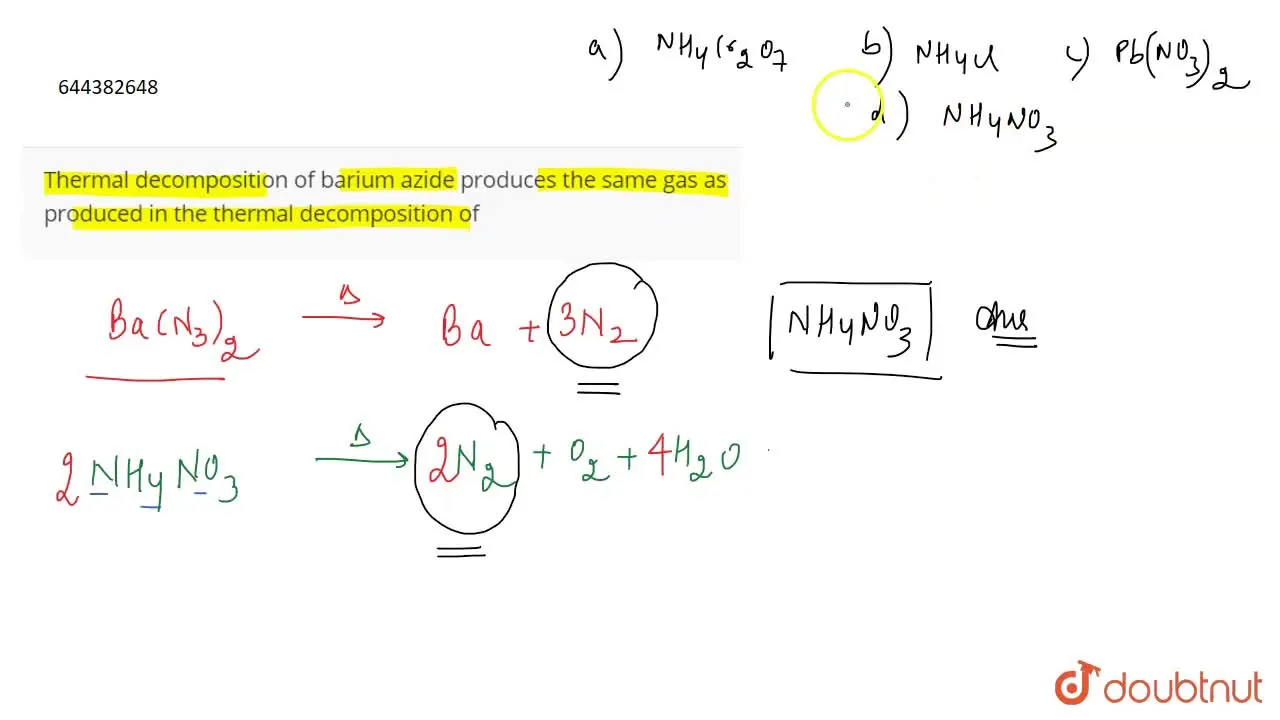Thermal decomposition of barium azide produces the same gas as produced in the thermal decomposition of
X is undergoing dissociation but not Y
Y is undergoing dissociation but not X
Both X and Y do not dissociate or associate
Molecular mass of X is smaller than molecular mass of Y
Step by step video & image solution for Thermal decomposition of barium azide produces the same gas as produced in the thermal decomposition of by Chemistry experts to help you in doubts & scoring excellent marks in Class 12 exams.
Related Playlists
Similar Questions
Thermal decomposition of K2Cr2O7 produces:
View SolutionThermal decomposition of sodium carbonate will produce
View SolutionNitrogen is obtained by the thermal decomposition of :
View SolutionThermal decomposition of zinc nitrate give:
View SolutionThermal decompostion of ammonium dichromate produces gas and steam.
View SolutionNitrogen gas is liberated by thermal decomposition of:
View SolutionPhotochemical decomposition off HNO3 produces:
View SolutionOn thermal decomposition of ammonium dichromate, a gas ‘X’ in produced. Find the number of occupied molecular orbital of X.
View SolutionThe compound that does not produce nitrogen gas by the thermal decomposition is
View SolutionWrite the reaction of thermal decomposition of sodium azide
View Solution


